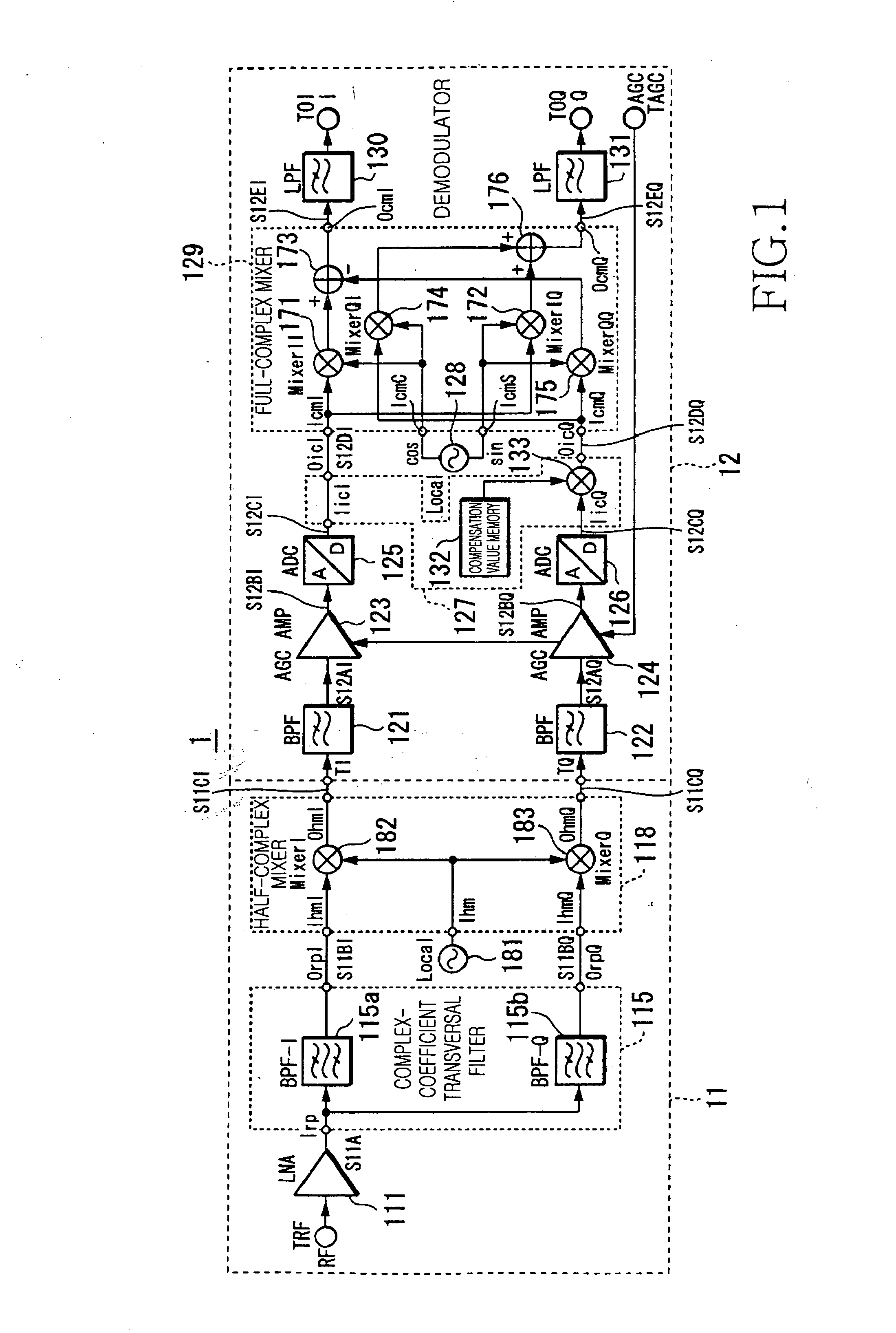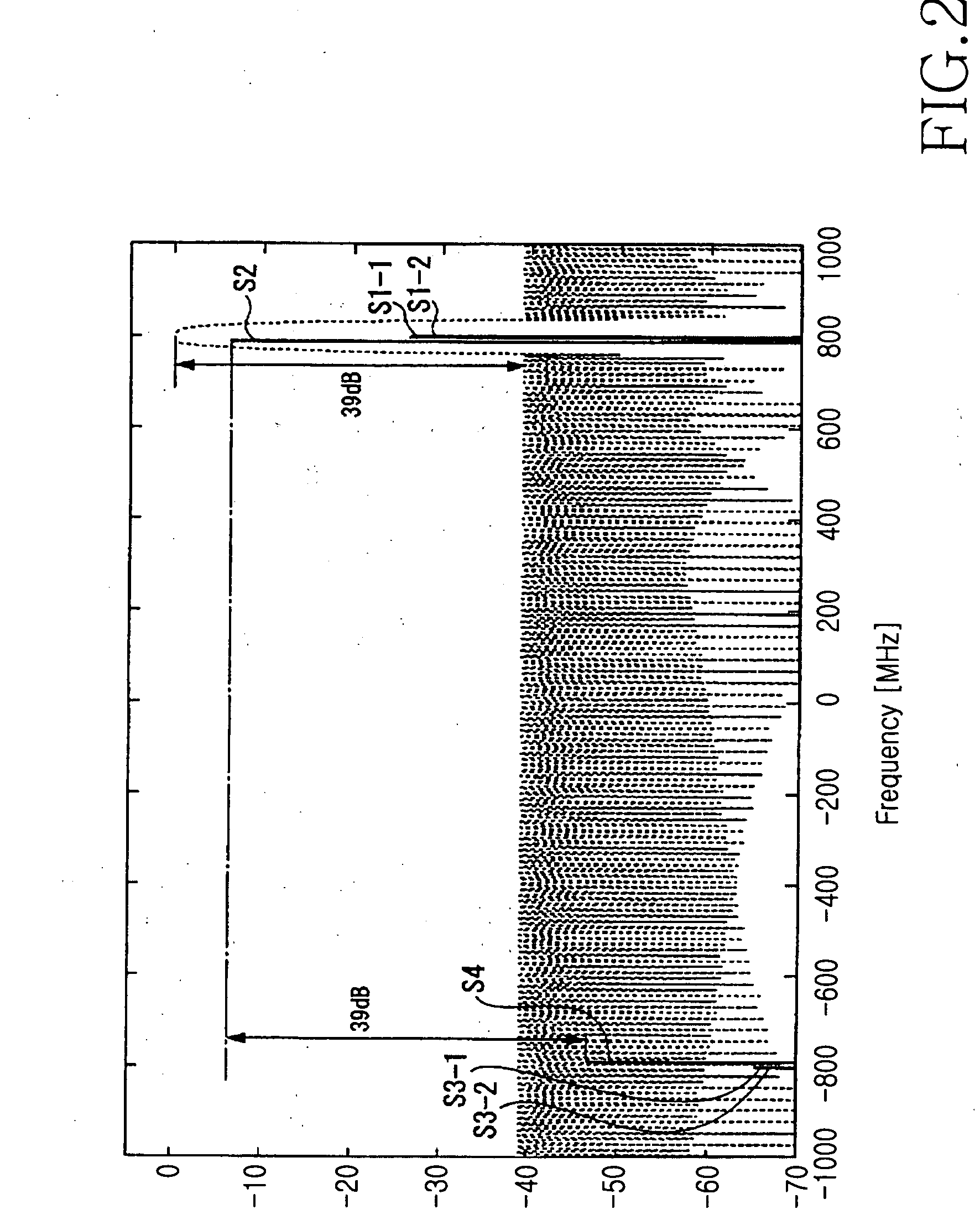Downconverter and upconverter
a technology of upconverter and downconverter, which is applied in the field of downconverter and upconverter, can solve the problems of high cost, large circuit size, and inability to easily realize image rejection ratio of about 30 db, and achieve sufficient image rejection ratio, reduce power consumption, and prevent the effect of error vector magnitude (evm)-related degradation
- Summary
- Abstract
- Description
- Claims
- Application Information
AI Technical Summary
Benefits of technology
Problems solved by technology
Method used
Image
Examples
third embodiment
Q. Third Embodiment of Downconverter of Low-IF Scheme
[0296]FIG. 18 is a block diagram illustrating a third embodiment of a downconverter of a low-IF scheme. The structure of a downconverter 7 illustrated in FIG. 18 is different from that of the downconverter 5 illustrated in FIG. 16. The downconverter 5 has a structure for performing an operation in the subtractor 141 or the adder 142 coupled to an output of the complex-coefficient SAW filter 140, but the downconverter 7 has a structure for processing a computational operation on real and imaginary parts-within a complex-coefficient SAW filter 145. The components with the same functions in the downconverter 7 of FIG. 18 and the downconverter 5 of FIG. 16 are denoted by the same reference numerals, and their description is omitted here.
[0297]FIG. 19 illustrates a structure of the complex-coefficient SAW filter 145 provided in the downconverter 7 of FIG. 18. The complex-coefficient SAW filter 145 has IDTs 1147 to 1149 provided on a p...
fourth embodiment
R. Fourth Embodiment of Downconverter of Low-IF Scheme
[0301]FIG. 20 is a block diagram illustrating a fourth embodiment of a downconverter of a low-IF scheme.
[0302] The previously-described downconverter 1 illustrated in FIG. 1 can simultaneously process positive and negative frequencies, and can select the positive and negative frequencies or select the simultaneous processing in a digital part after performing conversion to digital signals in the ADCs 125 and 126. Moreover, the downconverter 1 of FIG. 1 fixedly corrects a difference between the amplitude of the output signal S12CI of the ADC 125 and the amplitude of the output signal S12CQ of the ADC 126 by means of the imbalance corrector 127 in relation to interference of an image frequency signal in the AGC amplifiers 123 and 124 varying with AGC voltage.
[0303] To perform an adaptive correction process rather than a fixed correction process in a downconverter 8 of the fourth embodiment, an image interference canceller 150 ser...
first embodiment
S. First Embodiment of Upconverter of Low-IF Scheme
[0311] Next, an embodiment of an upconverter of a low-IF scheme in accordance with the present invention will be described with reference to the accompanying drawings.
[0312]FIG. 28 is a block diagram illustrating a first embodiment of the upconverter of the low-IF scheme. The components with the same functions in an upconverter 31 of FIG. 28 and the upconverter 30 of FIG. 23 are denoted by the same reference numerals, and their description is omitted here. The upconverter 31 of FIG. 28 has a different structure in that a complex-coefficient transversal filter 340 in the upconverter 30 of FIG. 23 is replaced with a complex-coefficient SAW filter 350.
[0313] Next, the operation of the upconverter 31 of FIG. 28 will be described. DACs 301 and 302 convert digital signals output in real and imaginary parts of a modulator to analog baseband signals. LPFs 303 and 304 remove high frequency components of the analog baseband signals output f...
PUM
 Login to View More
Login to View More Abstract
Description
Claims
Application Information
 Login to View More
Login to View More - R&D
- Intellectual Property
- Life Sciences
- Materials
- Tech Scout
- Unparalleled Data Quality
- Higher Quality Content
- 60% Fewer Hallucinations
Browse by: Latest US Patents, China's latest patents, Technical Efficacy Thesaurus, Application Domain, Technology Topic, Popular Technical Reports.
© 2025 PatSnap. All rights reserved.Legal|Privacy policy|Modern Slavery Act Transparency Statement|Sitemap|About US| Contact US: help@patsnap.com



